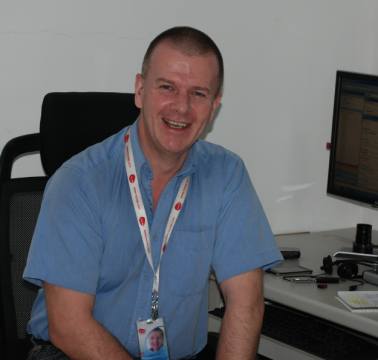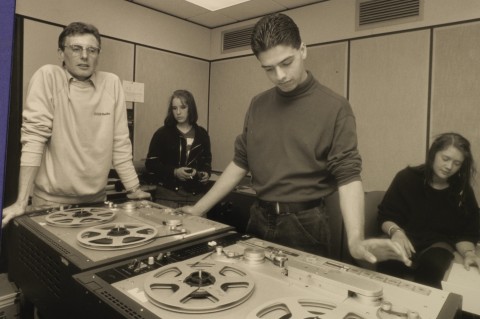
Bob Langley dancing with Ginger Rogers
KEITH ACKRILL – MEMORIES OF PEBBLE MILL
I worked at Pebble Mill on Radio 4 and television, from the day it opened until I left in 1982. I have very many pleasant recollections of the years I spent there.
The thing you noticed most was the tremendous enthusiasm that permeated the whole staff.
It was the feeling that we were in a brand new building hailed as the biggest combined radio and television complex in Europe. We were all determined to make Pebble Mill programming a force to be reckoned with.
Hours and hours of top television had the Pebble Mill label. As well as Birmingham productions, many London drama series were based in the studio or filmed on location, using Birmingham crews.
The Brothers, Poldark, All Creatures Great and Small, Juliet Bravo, Howards Way, even Basil Brush – the list goes on and on. And that doesn’t include the many classic dramas that were produced in Studio A.
Radio was an important part of the building’s output too. Radio Two programming found a home there, the Midlands Radio Orchestra was in residence for many years. Folk music, pop music – every kind of music came from Pebble Mill. And that’s not forgetting radio drama. Pebble Mill, of course, was home to The Archers and many other dramas of all kinds were produced alongside, together with some fine radio documentaries.
There were many landmark programmes – Top Gear, Pebble Mill At One, Saturday Night At The Mill – all of which I was fortunate to have worked on.
My main memories from the last programme include talking to actor Robert Wagner, in the hospitality room, about English beer. I know nothing about beer, but it was worth talking about it just have Natalie Wood’s dark brown eyes focused on me! I remember sitting across the table from Ginger Rogers and, later, photographing Bob Langley dancing with her – lucky devil – accompanied by Kenny Ball and his Jazzmen, with guest trumpeter James Hunt. Many, many great stars came to Pebble Mill to take part in the wide range of radio and television programmes that came from within that building.
I miss meeting them, but I also miss the camaraderie of the people I worked with, of being part of a team dedicated to putting broadcasting in the Midlands on the map.




